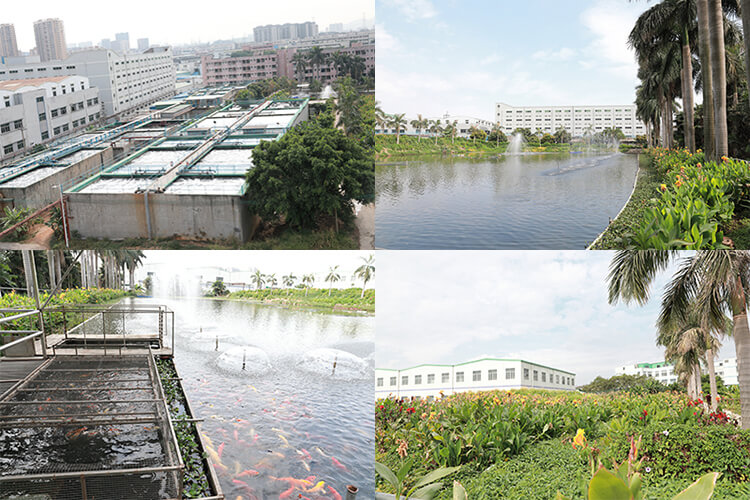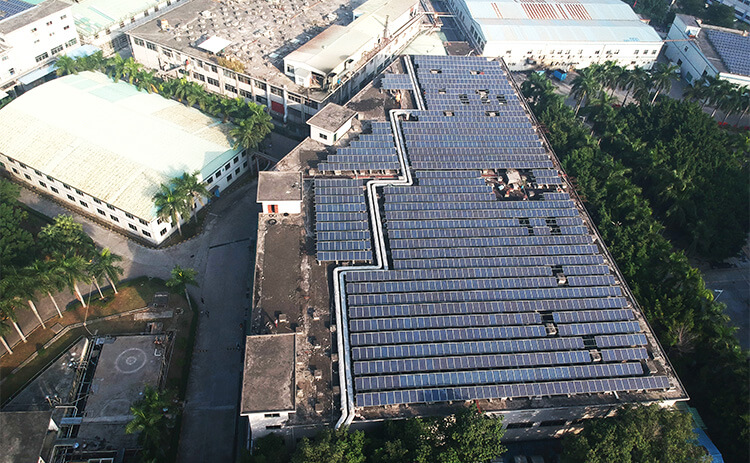Sun Hing Industries Holding Limited Environmental Protection Project
Editor: xxgyjt │ Date: May 21, 2019
I. Environmental Protection System Engineering
a. Water treatment system
The production water used by our company is the domestic sewage that is introduced from Maozhou River in Shenzhen. It is used in the production and use of the company's water treatment system after biochemical and purification treatment. The daily domestic sewage treatment capacity reaches more than 7,000 tons. . Our water treatment system has been reported by Hong Kong and mainland media many times. Our company is the first enterprise in China to apply sewage biochemical treatment technology to actual industrial wastewater treatment. At the same time, this has made our company OEKO-Txe rated as global textile. The only environmental star company in the apparel industry. Our company's water treatment system not only guarantees the water demand for production, but also is a great project for the benefit of all human society!
At present, our company's 20,000 square meters of constructed wetland and 50,000 cubic meters of oxidative stable pond have formed a unique ecological landscape, and the drainage outlet can use the treated printing and dyeing sewage to feed the koi, which is unique in the industry. The unanimous approval of many merchants and government departments. From the perspective of drainage water quality, it is far superior to the first-level emission standard of Guangdong Provincial Local Standard (DB4426/2001), which is far superior to the water quality of Maozhou River. In accordance with the requirements of local environmental protection regulations, the sewage discharge standard of our factory can implement the secondary emission standard, but our factory always insists that the first-level emission standard strictly requires itself.

b. Natural rainwater utilization
The company uses a new lake with a volume of 400,000 cubic meters as a reservoir. When it rains, it uses pipes to collect rainwater. After the rain, pumping the accumulated rainwater into the lake. This will not only protect the sewage from the sewers from overflowing the environment when the rainfall is heavy, but also collect the collected rainwater.
c. Decontamination and diversion project
Clearing and diverting means separating high-contaminated water from uncontaminated or low-pollution water, separating it, reducing the amount of pollutants discharged, and reducing the cost of water treatment. The dyeing department of the company is the main water department. The dyeing tank discharges about 150,000 tons of water per month, of which about 2/3 is sewage, and about 1/3 is clear water. In order to strengthen the recycling of water resources, the company plans to invest about 1 million to carry out the clean-up and diversion project. The project mainly fills the pipeline at the sewage discharge port of the dyeing tank, separates the sewage and clean water, so that the sewage flows into the company's sewage treatment system for treatment, and the clean water flows into the reservoir for reuse, thereby saving water and reducing water treatment. The purpose of the cost.
d. Green plant beautification environment
The company's total green area is more than 80,000 cubic meters!
II. Energy conservation
a. Finishing machine exhaust gas recycling
The setting machine will discharge hot gas during production operation. This kind of hot gas contains a lot of oil, smoke and dust, and has a certain high temperature heat, which is very harmful to human health and environment. The company recovers such high-temperature hot gases by means of degreasing and heat, thereby generating hot air and hot water for production. According to estimates, the company can save 4,500 tons of steam per year, equivalent to 935 tons of carbon dioxide emissions.
b. Boiler waste heat regression utilization
The company's boiler will produce high-temperature hot gas during production. In order to improve the recovery rate of waste heat from the high-temperature exhaust gas generated by the boiler, the company has rebuilt the steam boiler and shared 5 waste heat boilers. The theoretical steam production per hour of a single waste heat boiler is 1 ton. According to the current operating conditions and the recorded data of the instrument, the annual production of 5 boilers is about 27,700 tons.
c. Methane and hydrogen sulfide gas recycling
When the company processes printing and dyeing wastewater, it will produce a large amount of methane and hydrogen sulfide gas during the fermentation of the anaerobic tank. Methane gas is colorless and odorless. It is the main component of biogas and can be burned. It is commonly called gas. Hydrogen sulfide is a flammable acid gas under standard conditions, colorless, smells of rotten eggs at low concentrations, and is highly toxic. Both of these gases have combustion values, so the company delivers these two gases to the steam boiler through a suction line to help them burn at high temperatures, creating environmental benefits. It is estimated that the company collects and treats 950.4kg of hydrogen sulfide gas every year, and collects and uses 11563kg of methane gas every year. The total calorific value used each year is equivalent to saving 34,700 kilograms of fuel.
III. New energy and new technology
a. Solar energy generation
Solar energy is a clean and renewable new energy source, which is more and more popular among people and has a wide range of functions in people's lives and work. The company is currently using solar power, with a daily power generation of 3531.3 kWh, and a monthly power generation of 99,500 kWh. The company invested in the construction of a solar photovoltaic power station in 2013 and put it into use in early 2014. The project has installed a total of 7,200 250Wp solar modules, 360 and 20 strings, with a total installed capacity of 1800KW. The installed capacity of the project is 1.8MW, the designed service life is 25 years, and the cumulative power generation can reach 417.524 million kWh, which is equivalent to a cumulative reduction of carbon dioxide of 41,600 tons.

b. Ordinary fluorescent lamps use LED lights
LED lights use cold light source, glare is small, no radiation, no harmful substances are produced during use. The LED has a low operating voltage, adopts a DC drive mode, and has ultra-low power consumption (single tube 0.03 to 0.06 W). The electro-optical power conversion is close to 100%, and the energy saving is more than 80% than that of the ordinary fluorescent lamp under the same lighting effect. LEDs have better environmental benefits, no ultraviolet and infrared rays in the spectrum, and waste can be recycled, no pollution, no mercury, and can be safely touched. It is a typical green lighting source. The company keeps pace with the development of the times and gradually replaces the lighting fixtures in the group into LED lights. The company uses about 2.7 million kWh of electricity per year, and saves 40% of its electricity consumption with LED lights. The annual electricity saving is about 1.08 million kWh. Reduce the cost of electricity for the company.
c. The use of new environmentally friendly hydrocarbon refrigerants
HCR-22 hydrocarbon refrigerant is a new type of environmentally friendly refrigerant. It is made of pure natural gas, does not destroy the ozone layer, has no greenhouse effect, and has the characteristics of energy saving and environmental protection, fast cooling, high oil mixing rate, convenient filling and economic benefits. R22 refrigerant consumes a lot of energy, contains fluorine, destroys the ozone layer, and is prone to greenhouse effect. In order to improve environmental protection benefits, the company has invested a total of 6 million yuan. In 2012, it replaced R22 refrigerant with HCR-22 hydrocarbon refrigerant for central air conditioning. It is estimated that the company can save 13% of electricity consumption every year, saving about 1.27 million kWh of electricity every year and reducing 1,265 tons of carbon dioxide annually.
d. Use of environmentally friendly dye additives
The dyes used by the company are Huntsman environmentally friendly dyes imported from the United States. Huntsman is the world's largest privately owned chemical company. The characteristics of Huntsman's environmentally friendly dyes: no or no harmful aromatic amines; the dye itself is not carcinogenic, sensitizing, acute toxicity; after use, formaldehyde and extractable heavy metals are below the limit; no environmental hormones; no persistent organic pollution Harmful chemicals that do not pollute the environment; do not produce chemicals that pollute the environment; color fastness and performance are better than banned dyes.

